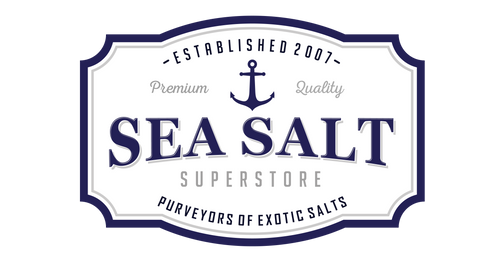When making homemade broth or stock, achieving a clear, pristine liquid can sometimes be a challenge. Impurities, proteins, fats, and small particles can cloud the broth, making it less visually appealing and affecting the texture. One simple yet effective method for clarifying broth is by using salt. While salt is typically known for enhancing flavor, it also plays an important role in the clarification process. Here’s how salt helps to clear the broth, resulting in a more refined, transparent liquid.
1. Salt Encourages Protein Coagulation
When you simmer bones, meat, or vegetables to make broth, proteins are released into the water. These proteins, particularly albumin (found in meat) and collagen (found in bones), can cause cloudiness and create an uneven texture in the broth. This is because the proteins denature during cooking, forming tiny particles that float in the liquid.
Salt assists in coagulating these proteins. By drawing water out of the proteins, salt helps them to clump together into larger aggregates or solid masses. This coagulation process allows the proteins to rise to the surface of the pot, where they can then be skimmed off. As the proteins clump together, they carry other impurities and particles along with them, effectively cleaning the broth as they rise.
2. Salt Helps to Draw Impurities to the Surface
As salt encourages protein coagulation, it also helps draw other impurities, such as fats, blood, and small particles, to the surface of the broth. These impurities are typically responsible for the cloudiness in a broth, giving it an unappealing, murky look.
By helping to form coagulated clumps, salt causes these impurities to be trapped in the protein masses that float to the top. As the broth simmers, the salt helps form a kind of "scum" or froth, which is easily removed with a spoon or ladle. This process is commonly referred to as “skimming” the broth, and removing these impurities is a crucial step in achieving a crystal-clear, refined broth.
3. Salt Creates a Better Environment for Clarification
Salt not only aids in coagulating proteins and drawing impurities to the surface, but it also alters the cooking environment in a way that promotes clarification. Salt increases the density of the broth, which can encourage the separation of solid particles from the liquid. This denser environment helps create a better medium for the formation of solid clumps, allowing them to rise to the top more easily.
Additionally, salt can slightly reduce the viscosity of the broth, which helps the particles move more freely and separate out from the liquid. This creates a clearer broth, as the solid particles that cause cloudiness are effectively removed during the cooking process.
4. Using Salt in the Cooling Process
Some cooks use a method known as "cold-water clarification" for broth, which involves adding salt after the broth has been cooked and then allowing it to cool. This method works well for stocks or broths that have cooled down and become cloudy during the refrigeration process. The salt helps pull impurities to the bottom of the pot as the broth cools, and once the liquid is strained or filtered, a much clearer result can be achieved.
5. The Role of Salt in a "Clear Soup" Method
In some recipes, particularly in Asian cuisine, a clear soup or broth is desired, and the use of salt is an important part of the method. The process involves adding salt at various stages to encourage coagulation and to help clear the liquid. For instance, when making traditional Chinese clear soups or broths, a small amount of salt is added early in the simmering process to help proteins coagulate quickly. This encourages a clearer broth without the need for additional clarifying agents or lengthy skimming.
6. Clarifying Broth with Egg Whites and Salt
Another technique for clarifying broth involves using egg whites along with salt, a method popular in classical French cuisine. The egg whites act as a natural clarifying agent, while the salt helps draw out the proteins and fats. The process involves beating egg whites and adding them to the hot broth. As the broth continues to simmer, the egg whites coagulate, trapping the particles and impurities in the liquid. The egg white mixture then rises to the top, where it can be easily removed, leaving behind a clear broth.
The combination of salt and egg whites works well because salt helps the egg whites to form a better "raft," which traps more impurities and forms a firmer barrier between the liquid and the solids. This traditional method is commonly used when preparing consomme or other clear broths.
7. Balancing Salt in the Broth Clarification Process
While salt is useful in clarifying broth, it’s important to use it in moderation. Too much salt can overpower the flavor of the broth and make it too salty. The key is to use just enough salt to help with coagulation and clarification without altering the overall flavor profile of the broth.
A small pinch or a teaspoon of salt is usually sufficient for a large pot of broth. The goal is not to make the broth salty, but rather to use salt as a tool to help remove cloudiness and improve texture.
Conclusion
Salt does much more than simply enhance the flavor of a broth—it plays an important role in clarifying the liquid, making it smoother, cleaner, and more visually appealing. By encouraging protein coagulation, drawing out impurities, and creating a better environment for clarification, salt helps to produce a crystal-clear broth that retains all the rich flavors without the cloudiness. Whether you are making a hearty beef stock, a delicate chicken broth, or a flavorful vegetable stock, salt is a valuable tool in the clarification process. So next time you make broth, consider using a bit of salt to help clear up the liquid, resulting in a more refined and delicious final product.




